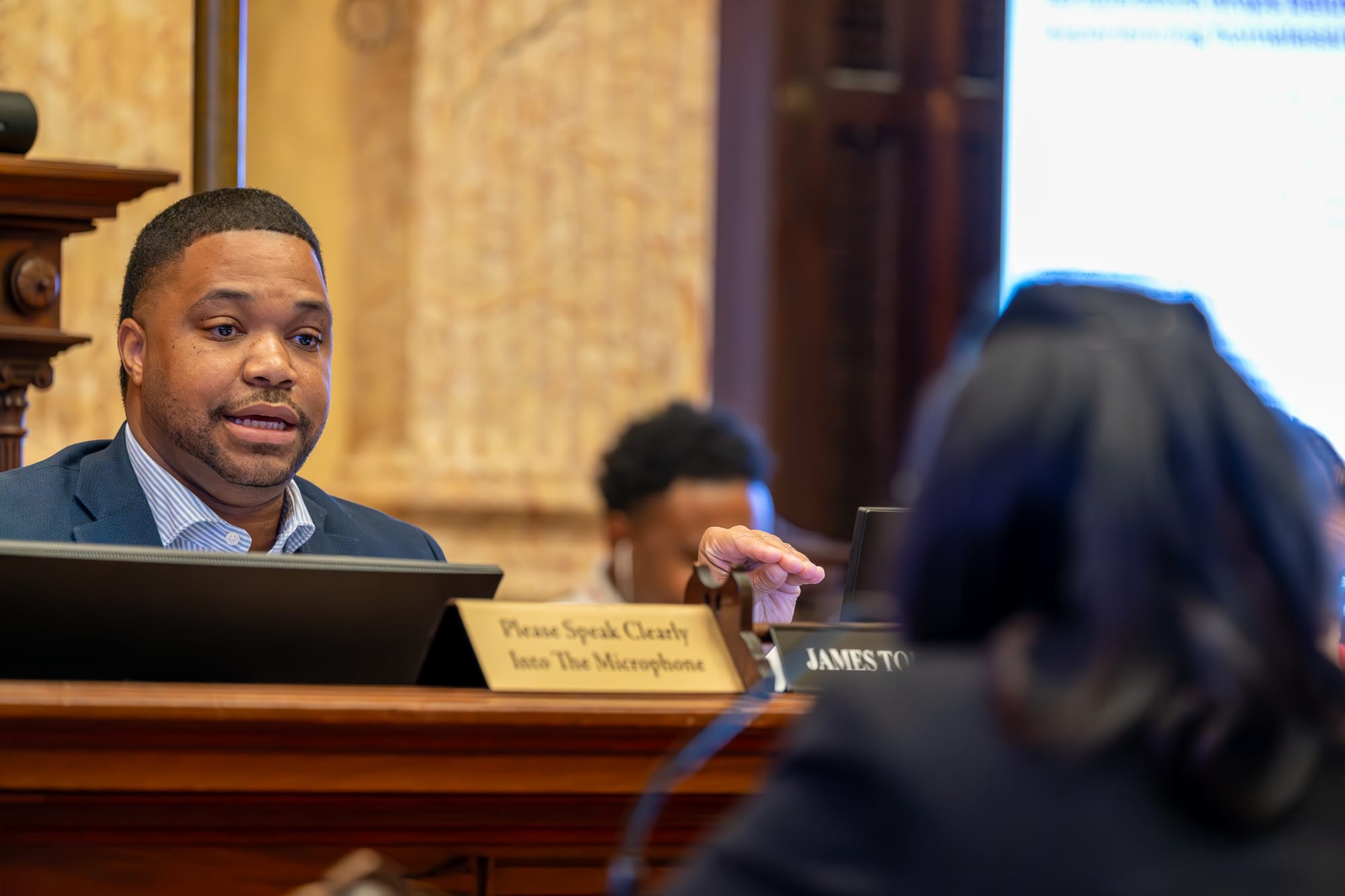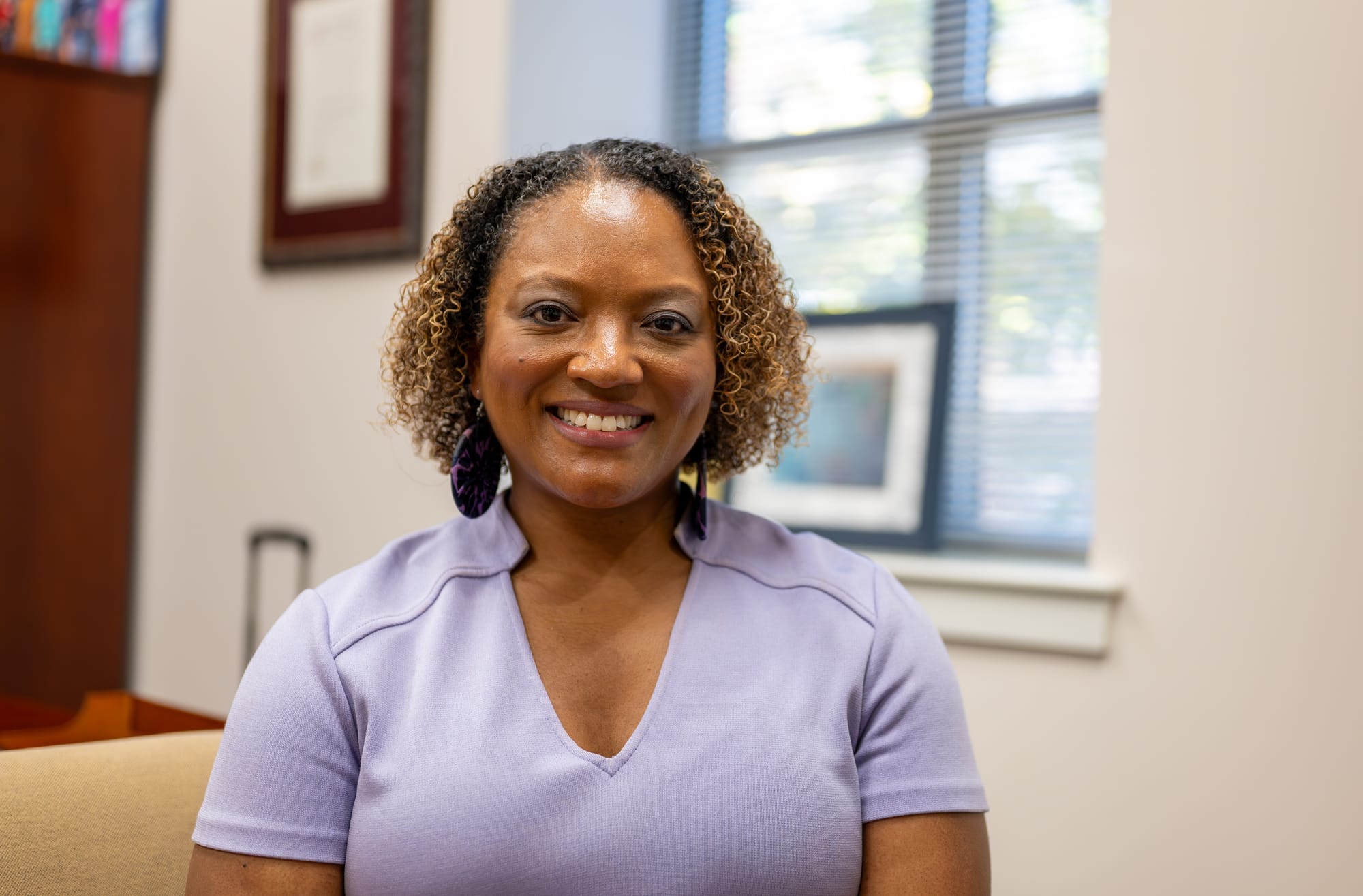
Housing advocates and City Council members pressed Baltimore’s homeless services agency for more than two hours on November 4 about what they’re doing to protect unsheltered residents after a survey that showed widespread dissatisfaction with shelter conditions.
At that City Council hearing, Councilman James Torrence, who has experienced homelessness and now chairs the Housing and Economic Development Committee, relayed reports from unsheltered constituents about mistreatment from staff and mold in the rooms. Their experiences mirror findings from a report detailing widespread dissatisfaction with the city’s shelters by Housing Our Neighbors, a nonprofit advocating for the rights of the city’s unsheltered population.
“I am disturbed,” Torrence said, noting that agency officials did not provide much of the information he requested before the hearing. “I am mortified not only by HON’s survey results, but also from talking to residents.”
Residents at the city’s homeless shelters are often unaware of the process to file grievances about safety, cleanliness and other matters. Residents rate the conditions of shelters as 5.1 out of 10 on average, the survey of 74 current and former shelter residents found.
The survey, conducted during the dangerously hot summer months, found that shelter residents faced insect infestations; brown-colored water coming from showers, toilets and faucets; expired or moldy food; and a lack of wheelchair accessibility.
Ernestina Simmons, director of the Mayor's Office of Homeless Services, acknowledged that shelters and other services need improvement. But she seemed to dismiss the survey results, pointing to the agency’s own data and findings by the Virginia-based consulting group Guidehouse.
“One story is one story to me, but I also want to lift up the fact that these providers are being able to exit clients to permanent housing,” Simmons said.
Simmons said nearly 32% of clients were connected to permanent housing so far this year, which is up from 19% in 2024 and 13% in 2023.
Simmons also noted that although a majority of clients in city-funded shelters surveyed by providers reported being satisfied with facility cleanliness and case management services, poor food services and a lack of recreational activities have been consistent complaints. All of the shelters also comply with the U.S. Department of Housing and Urban Development’s minimum habitability standards, she added.
At the crux of many of the issues with homeless services agency, however, is funding. Although the agency’s $73.7 million budget in the 2026 fiscal year marks a 19% increase over the prior year, changes in funding priorities at the federal level threaten to hamper services.
The federal government plans to cap the amount of funding that continuum of care programs can use for permanent housing at 30% of total funding, threatening to kick 700 Baltimoreans out of subsidized housing, Simmons said.
Even without the federal funding changes, the homeless services office is struggling on its current budget.
The agency is operating with just eight outreach workers as more than 2,000 people in Baltimore are unsheltered on any given night, 70% of whom are Black, according to the city’s 2025 Point-in-Time count.
That marks a 26.5% increase in unsheltered residents over the year prior. And, with homelessness on the rise, there are just 562 shelter beds in the city.
Among those invited to speak at the hearing was Kevin Lindamood, president and CEO of Health Care for the Homeless. In early December, his organization will unveil plans for a 42-unit affordable housing development in downtown Baltimore.
“We’ve increasingly realized that the best way to improve health is to help people find housing and keep it,” Lindamood said. “Homelessness is fundamentally an affordable housing problem.”
The tense City Council hearing came just days after the successful passage of a package of bills that could facilitate the building of more affordable housing in the city.
Mayor Brandon Scott signed four bills on November 3 designed to make it easier for developers to build housing in the city, though they don’t explicitly require that the housing be affordable.
Proponents say the bills, including legislation to remove off-street parking requirements and eliminate a two-staircase mandate for some properties, will increase housing density and affordability by encouraging more building in the city and lowering construction costs.
The final bill of the housing package, dubbed the Housing Options and Opportunity Act, is awaiting consideration by the council. The Planning Commission signed off on the bill on October 30, and if passed by the City Council, it would update the city’s zoning laws to include a “low-density, multi-family housing” category.
The mayor has said the bill would expand access to affordable housing by making it easier to build smaller, multi-family homes that the city’s current segregationist zoning laws largely prohibit.
The Land Use and Transportation Committee, with which the legislation now sits, will hold public hearings to discuss the bill on November 20 and December 1. It must take a vote on the bill before the full City Council considers it.
Despite the legislative progress, however, the housing crisis still poses immediate concerns.
With thousands of vacant properties, rising costs of living, and few affordable housing options, many people are forced to either live in the streets or in shelters. The conditions of the shelters, which are designed to provide a period of transition and connect people to housing and other services, have prompted hundreds of grievances in the past year alone, Simmons said.
Shelter residents have reported that grievances frequently go unanswered. In response, Torrence asked Simmons if she would support the city implementing an independent ombudsman or panel to handle complaints.
Simmons initially did not answer the question, instead detailing that there are independent committees composed of individuals with lived experience who develop shelter policies.
The councilman seemed impatient as he repeated the question, to which Simmons eventually replied that she would accept the proposal. Simmons promptly added that, under the current protocol, shelters handle grievances.
Tensions flared again when Torrence accused Simmons of lying about the city’s preparation for the winter season.
The councilman claimed he’d been told that the city didn't begin looking for additional winter overflow shelters until September, which Simmons denied. The city’s winter shelters open on November 15, but the agency has yet to finalize plans for additional facilities.
The city is eyeing Edgewood Elementary School as a winter overflow facility, Simmons said, but the community engagement sessions to discuss the plan don’t begin until November 12.
“I care about the people who have to sleep on the streets,” Torrence said. “I don’t want them to freeze and die.”
As a harsh, potentially deadly winter approaches, the unsheltered population faces additional dangers. The prevalence of substance use disorder among unhoused individuals has skyrocketed, according to the point-in-time count.
Compared to 23% of people reporting having substance use disorder two years ago, a whopping 77% reported being addicted to a substance this year. In addition, 67% of unsheltered residents also reported having a “serious” mental illness.
In response to the rise in substance use issues and recommendations from an independent consultant, the agency is now working to implement on-site behavioral health and substance use services, Simmons said.
Still, advocates for unsheltered individuals have long criticized the city’s the lack of support for the vulnerable population. And that could be worsened by a proposed policy that would limit shelter stays to 90 days.
Simmons confirmed the agency is reviewing the 90-day stay policy, but that it remains in draft form. That did little to assuage concerns among members of Housing Our Neighbors, who said forcing individuals to leave shelters without lining up housing and other services should not be an option.
“This proposal will kill people,” said Kyle Long, an organizer and clinical social worker.
The hearing demonstrated widespread frustration with local homeless services, but advocates also have their eyes on the General Assembly. While agency officials were largely focused on funding woes, advocates say the system itself is broken.
It’s not just that services are lacking. Shelters are largely unregulated, making them ripe for abuse.
For the past two years, state lawmakers have failed to pass legislation that would regulate shelters throughout Maryland. The legislation would have required shelters to be licensed by the state Department of Housing and Community Development, which would develop and enforce operational and building standards, and minimum protections for shelter residents.
Legislators amended the 2024 bill, which passed the General Assembly, to simply call for a study on shelter conditions. A renewed effort to implement regulations died in committee this year, but advocates plan to lobby again for a version of the bill in 2026.
“Our members and neighbors are not livestock to be herded in and out of shelters without a word; they are human beings and deserve housing that ensures their safety and uplifts their dignity and humanity,” said Carey Cabrera, an organizer with Housing Our Neighbors.







Comments